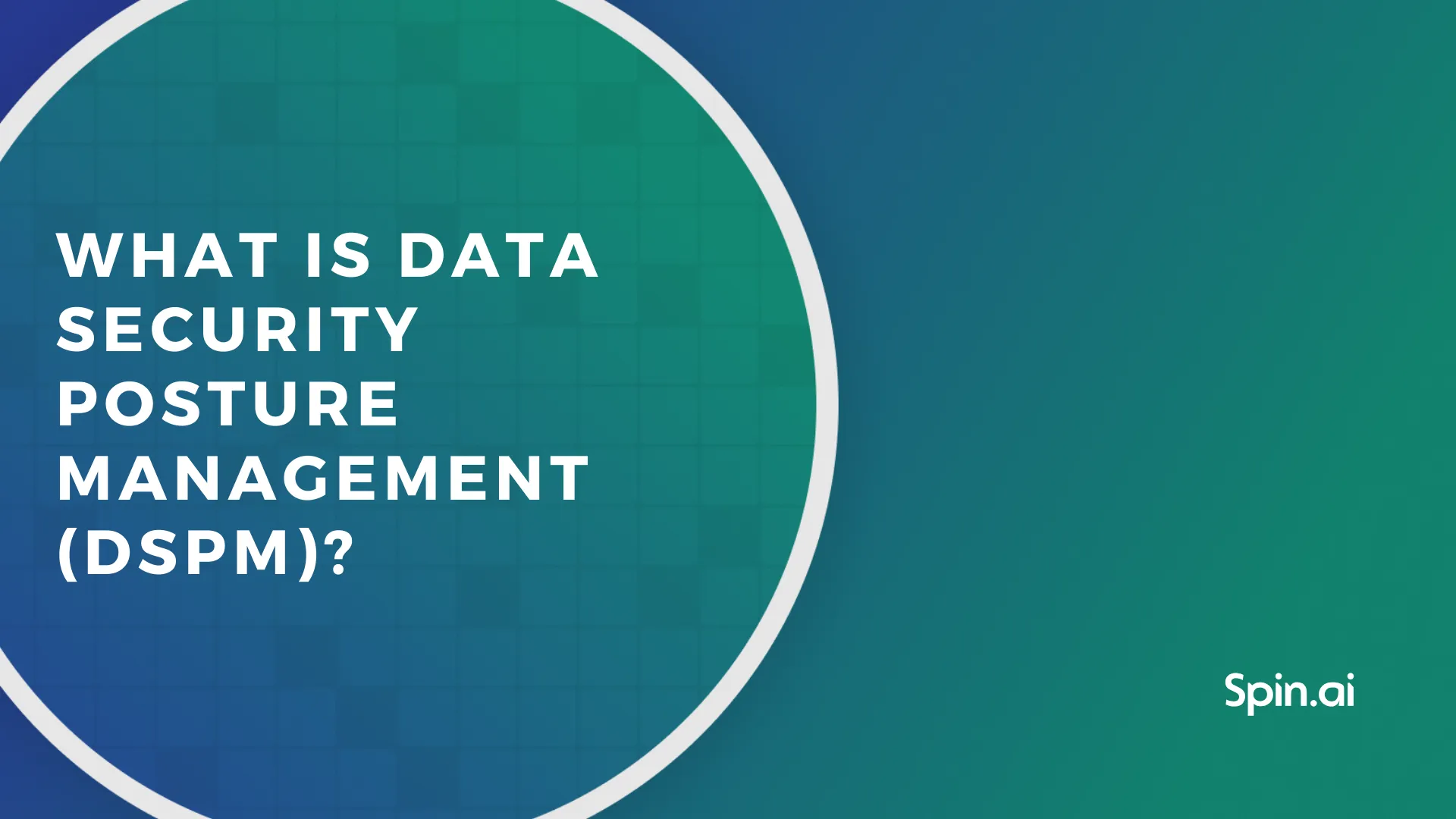Implementing Data Security Posture Management (DSPM) Framework to ensure compliance: Key Steps
Data security posture management (DSPM) is an automated, typically agentless, solution designed to locate sensitive data within various cloud platforms and services, evaluating its exposure to security risks and regulatory non-compliance. Thereby, DSPM enables security teams to address data misuse and quickly predict, prevent, and respond to data breaches, leaks, and exposures.
The demand for DSPM solutions rises accordingly to gigabytes of sensitive data residing in organizations’ systems and rising security and compliance risks associated with this data. The IBM Cost of a Data Breach Report 2024 indicates that 82% of data breaches affected data in the cloud. Most of these data breaches resulted in substantial financial losses and noncompliance. Hence, gaining visibility over all data residing in cloud environments is necessary to keep them safe.
Let’s see how DSPM can help ensure data security and compliance.
Why the DSPM Framework is Essential Today
Furious cloud adoption led to data security risks and vulnerabilities that legacy data security technologies cannot address. Acquiring new technologies, such as DSPM, is essential for data security because it helps address some of the common cloud security headaches:
Shadow data
Shadow data is unmonitored or unmanaged data within an organization, often stored in cloud services or backups, which poses security risks due to lack of oversight and protection. With one-third of data breaches in 2024 involving shadow data, it’s clear that the rapid growth of data is complicating efforts to monitor and protect it manually. DSPM tools help address this issue by continuously scanning and tracking where data resides. DSPM uncovers the shadow data by mapping data flows, ensuring all sensitive information is visible and adequately secured. By 2026, over 20% of organizations will adopt DSPM solutions to address shadow data, driven by the need to locate unknown data and reduce related security and privacy risks.
Excessive permissions
Users often have excessive and outdated access permissions or even retain access to sensitive data after leaving the company. A striking 67% of organizations have ex-employees who retain access to Google Workspace assets for over five years. DSPM helps address excessive permissions by identifying and monitoring who can access sensitive data, ensuring that only authorized users retain necessary access.
Cloud Misconfiguration
Cloud misconfigurations give adversaries an easy path to infiltrate the cloud and expose a massive volume of sensitive information. According to a Gartner survey, misconfiguration-related issues cause 80% of all data security breaches. DSPM detects misconfigurations in data storage and access settings, alerting teams to potential vulnerabilities. Furthermore, it automates the remediation of these issues, ensuring data is securely managed and compliant with policies.
By continuously mapping security settings to internal policies and regulatory requirements, DSPM ensures that sensitive data remains secure and compliant, reducing the risk of breaches and legal consequences.
How DSPM Supports Compliance
Data protection and privacy regulations such as GDPR, HIPAA, and PCI DSS impose strict requirements on how data is accessed, stored, and processed. Yet, improper data handling practices that lead to financial penalties, reputation damage, and non-compliance are not uncommon.
One of the biggest data breach fines to date was a $888 million fine imposed on Amazon for GDPR violation. The violation occurred due to improper handling of personal data for advertising without valid user consent. Effective DSPM practices could have prevented this by improving data governance, ensuring compliance, and providing data storage and usage visibility.
DSPM supports regulatory compliance by continuously monitoring and analyzing how sensitive data is handled across cloud environments, ensuring it aligns with industry-specific regulations and legal requirements. DSPM maps data security settings to the rules mandated by frameworks such as GDPR, HIPAA, or CCPA, identifying areas where an organization may fall short. This proactive approach not only helps organizations meet regulatory standards but also ensures ongoing compliance, reducing the risk of fines, legal liabilities, and reputational damage.
Key Components of DSPM
Experts define four main components of DSPM:
Data Inventory
One cannot secure something if unaware of where it exists. Data inventory helps businesses understand what data they have, in what amount, and where. While manual inventory is tough, DSPM automates the process by continuously scanning for sensitive assets, enhancing security and compliance.
Data classification
Data classification is the next critical component of DSPM. It categorizes data based on predefined criteria (e.g, data sensitivity, affiliation with any of the regulatory frameworks, etc.), thereby giving more visibility over sensitive data assets.
Data risk management
DSPM identifies and prioritizes vulnerabilities associated with each data asset. These vulnerabilities include but are not limited to misconfigurations, excessive permissions, security and policy violations, regulatory noncompliance, etc. DSPM continuously identifies, prioritizes, and mitigates data security risks and provides real-time insights and automated solutions.
Data incident detection and response
Data incident detection and response involves tools and strategies for identifying incidents, planning responses, and implementing recovery measures. DSPM provides similar features, with real-time dashboards and reports prioritizing vulnerabilities by severity, offering faster, continuous, and more precise detection than manual methods. It helps teams focus on critical issues, with many solutions providing remediation guides or playbooks for resolving threats and automating system and security configuration adjustments.
Steps to Building an Efficient DSPM
An efficient DSPM requires time and expertise yet is fully paid off. Learn how to create and implement an efficient DSPM for 7 key steps.
- Analyze your data management that can be further leveraged to build your DSPM, e.g., for data discovery.
- Discover and classify data scattered around endpoints (computers and mobile devices), data centers (on-prem and cloud), and applications.
- Categorize your data by its sensitivity and identify the security configurations for each data category (e.g. there’s a drastic difference in the security requirements for PHI and a corporate logo.
- Assess data risks to your data, including excessive permissions, misconfigurations, shadow data, etc.
- Create new policies for data handling based on identified risks. For example, create a rule that forbids data storage in a public cloud. Identify how you will impose these policies and ensure that everyone follows them. For example, you can use DLP policies in Microsoft Office 365.
- Lay down the incident response plan to help you act immediately and minimize the impact of a cyber event.
- Identify and acquire resources necessary for implementing DSPM, including budget, employees in charge, and tools. Once you’ve analyzed your state-of-the-art data security posture, you can outline available and lacking assets and define ways to obtain them.
Steps to Building an Efficient DSPM
An efficient DSPM requires time and expertise yet is fully paid off. Learn how to create and implement an efficient DSPM for 7 key steps.
- Analyze your data management that can be further leveraged to build your DSPM, e.g., for data discovery.
- Discover and classify data scattered around endpoints (computers and mobile devices), data centers (on-prem and cloud), and applications.
- Categorize your data by its sensitivity and identify the security configurations for each data category (e.g. there’s a drastic difference in the security requirements for PHI and a corporate logo.
- Assess data risks to your data, including excessive permissions, misconfigurations, shadow data, etc.
- Create new policies for data handling based on identified risks. For example, create a rule that forbids data storage in a public cloud. Identify how you will impose these policies and ensure that everyone follows them. For example, you can use DLP policies in Microsoft Office 365.
- Lay down the incident response plan to help you act immediately and minimize the impact of a cyber event.
- Identify and acquire resources necessary for implementing DSPM, including budget, employees in charge, and tools. Once you’ve analyzed your state-of-the-art data security posture, you can outline available and lacking assets and define ways to obtain them.
Spin.AI DSPM Solution
Are you looking for a reliable DSPM solution?
Try SpinDSPM. It provides visibility and control to proactively reduce the risk of sensitive data exposure and exfiltration in your SaaS by offering the following features:
- Data audit: provides visibility on data by discovering and monitoring files shared outside your organization.
- Access management: changes access to shared files and file ownership to protect them from possible data leaks.
- Sensitive data detection & classification: identifies and monitors custom types of sensitive data across core services and sends alerts for confidential data sent, stored, or received by users.
- Abnormal behavior monitoring & control: notifies users of abnormal data downloads, transfers, or deletions.
- Security automation: follows predefined policies to automate file sharing access management, sensitive data detection, and abnormal user behavior.
- Incident alerting and advanced reporting: sends quick automated notifications on data leak threats via Email, Slack, Teams, Jira & ServiceNow.
Get a free demo to learn more about SpinDLP or start a free trial to leverage the solution’s benefits now!
What is the difference between DSPM and CSPM?
CSPM and DSPM may sound alike, but they target different areas. CSPM, or cloud security posture management, is concerned with identifying and addressing vulnerabilities within cloud infrastructure – virtual machines, containers, as well as PaaS implementations. DSPM, in turn, concentrates on detecting and mitigating vulnerabilities at the data level.
How do I begin implementing SaaS DSPM in my organization?
CSPM and DSPM may sound alike, but they target different areas. CSPM, or cloud security posture management, is concerned with identifying and addressing vulnerabilities within cloud infrastructure – virtual machines, containers, as well as PaaS implementations. DSPM, in turn, concentrates on detecting and mitigating vulnerabilities at the data level.









